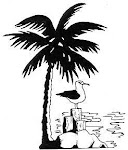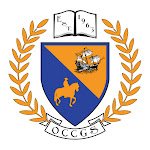One of the more bizarre scenes of the Civil War unfolded for a stunned audience at Washington’s Columbian Armory on June 18,1861. A giant balloon, the Enterprise, inflated with 20,000 cubic feet of gas and gay with British and American flags, swayed over the capital’s treetops. She carried a full set of signal apparatus. Beneath her trailed an invisible innovation, a hair like wire wrapped in green silk, which was paid out from a reel at a station below. The master of the globe was no less spectacular that his vehicle.
He was Dr. Thaddeus Sobieski Constantine Lowe, son of a New Hampshire politician and the husband of a French beauty, the daughter of an officer of Louis Philippe’s Royal Guard.
Dr. Lowe had excited much of the country for several years with his threats to sail on a transatlantic voyage using the eastward moving currents of air high over the ocean. The balloon rose 500 feet in the June sky. There was soon the historic chattering of a telegraph key at the ground station.
The message was addressed to President Lincoln:
Sir: This point of observation commands an area nearly 50 miles in diameter. The city, with its girdle of encampments, presents a superb scene. I have pleasure in sending you this first dispatch ever telegraphed from an aerial station.
Signed T.S.C. Lowe.
Other messages were sent from the balloon to distant cities by regular wire.
Lincoln replied to his telegram and when the demonstration was over, a crew towed the balloon through the city’s streets and anchored it on the White House lawn. Lincoln inspected it from an upper window. The Enterprise spent the night there, and the next day Lincoln took a closer look. Some reporters said that he actually made an ascension with Lowe. All this was a prelude to the first formal use of aerial observation by armed forces, but through Lowe was to become the first chief of the Federal Balloon Corps, he had predecessors as an aerial warrior.
The first balloon bought for American military use was an $850.00 model of raw India silk built by one John Wise of Lancaster, Pennsylvania. The officer who sponsored Wise was Major Hartman Bache, the grandson of Benjamin Franklin, who had been the first American to suggest the use of balloons in war. Wise and his gasbag reached Washington before the battle of Manassas, but they missed the fighting despite heroic efforts. A crew towed the balloon from Washington with a mule drawn wagon, dodging trees and telegraph poles for hours on a dark night, the struggling down a canal bank, the crewmen often flung into the water in an effort to guide their monstrous charge.
An officer who heard the guns of Bull Run in the distance impetuously whipped up his mules and, abandoning rope controls, tore the balloon in trees and deprived the Federal Army of its expected observation post. The repaired balloon escaped from Washington a few days later and was saved from Confederate hands only by alert troops who shot down the southbound runaway. Wise resigned amid sharp criticism, having served without pay, rations or lodging.
The first really effective balloon observation on behalf of an army came on July 31, 1861 at Fortress Monroe, Virginia, with the canny General Ben Butler as sponsor. The balloonist was John LaMountain of Troy, New York, an aerialist who had gained prewar fame by sailing 1,100 miles in less than twenty hours in an eastward trip from St. Louis. LaMountain found that Confederate camps surrounding the fort were less menacing that Butler had imagined.
He also provoked the first known report on military aviation when the Confederate Colonel Robert Johnson sent the message: “The enemy made two attempts to inspect us in balloons.”
It was also LaMountain who used the first ‘aircraft carrier’ when he hitched his balloon to the armed transport Fanny and rose above the waters of the Chesapeake to peer at the enemy on August 1, 1861. This aeronaut added more firsts by making a night aerial reconnaissance, this time anchored to a tug near Fortress Monroe. He estimated Confederate strength within his view by counting the number of tent lights.
He provoked the first “blackout” for General Beauregard had his camp lights covered and dimmed where the balloons operated. It remained for Professor Lowe to outstrip all rivals and organize the army’s balloon corps.
He also designed the first “true aircraft carrier,” the converted barge USS George Washington Parke Custis, which he fitted for efficient balloon ascensions. Both Lowe and LaMountain, who were hired as civilians, were paid about ten dollars a day plus expenses, but the professor, though much younger and less experienced, became the dominant figure in the war’s aerial operations.
He established several ‘firsts” in his career.
The pioneer “antiaircraft” battery fired him upon in August 1861, near Arlington. His opponent, Captain E. P. Alexander, CSA, who was to become a military balloonist himself on occasion, reported that his guns threw shells so near the Federal balloon that Lowe “came down as fast as gravity could bring him.” The birth of modern artillery fire control by aerial reconnaissance was in September 1861, near Washington’s Chain Bridge; later in the war Lowe’s men directed Federal mortar fire with great accuracy. The balloon chief drew from the press ridicule that has a strange sound in modern ears. The most cutting, by a Cincinnati newspaper, was a satirical report that “an army of airborne troops” would leave Camp Whatawhooper to relieve a Federal fort in Florida. But alert officers saw the great value of Lowe’s work, and General McClellan went aloft with him several times.
Despite the intense interest of public and some military men, the corps was disbanded in June 1863, after service on both Eastern and Western fronts. At its peak it had no more than seven trained balloonists in the field, and half a dozen balloons. Some possibilities were overlooked, aerial photography, for example, which was proposed, but not used.
Only one corpsman is known to have died in action, a civilian telegraph operator from Washington, D.D. Lathrop, who stepped on a Confederate booby trap torpedo at the base of a telegraph pole near Yorktown, Virginia. The blast tore off his legs and killed him.
The balloons were made of pongee in double thicknesses, each sewn by a team of fifty seamstresses, and fashioned in gored sections. A valve at the top of the bag was sealed with a gum of paraffin, beeswax, and other substances, to be opened by a rope when he operator wished to descend. Excess gases could escape from an open tube at the bottom of the sac. The gas was hydrogen, produced in mobile equipment from the action of sulphuric acid on iron filings. Wagons carried wooden tanks that were lined for the purpose, and gases were cooled copper pipes passed through water and purified by passage through lime.
Only once, during the retreat of the Seven Days battles before Richmond, did Confederates capture aerial equipment, but they nabbed three gas generators, ready for action. The Confederate balloon service was skimpy indeed, and there are few recorded instances of its work. The first ascension is said to have been made by Lieutenant John Randolph Bryan on the peninsula below Richmond, a flight cut short by the close firing of the enemy, which soon drove Bryan to earth, where he tried to resign from ballooning. General Joseph E. Johnston declined sharply: “Absolutely not! You’re the only experienced balloonist in the Confederate army.”
On another occasion, General Beauregard is said to have sent up a balloon he obtained from private sources, but the ascent was not successful. The Creole general was undismayed; he later used a balloon in the defense of Charleston. Lieutenant Bryan got his fill of the balloon service on a final flight when his bag escaped and he drifted over Federal lines. In panic, he destroyed his identification papers and the notes he had made. When the wind changed and he floated over water, Bryan dropped his clothing overboard, prepared to swim for his life. He landed at last on land, in the midst of a Confederate camp where he was unknown. He was for a time in danger of being shot as a spy, and persuaded the soldiers that he was one of them only after a desperate harangue.
Federals once thwarted Rebel ingenuity. General Longstreet recorded that some unsung hero proposed that the South be called upon for an ultimate sacrifice, the silk dresses of its women. They came in, evidently in plenty, for the general wrote: “We soon had a great patchwork ship of many varied hues which was ready for use in the Seven Days campaign.” The only source of gas was in Richmond, and the balloon was inflated there, tied to a locomotive, and run down the York River Railroad as far as possible. One day, when it was on a steamer going down the James River towards battle, disaster struck. The tide went out, and the boat and balloon were left helpless on a sand bar. Longstreet mourned it. The Federals gathered it in, and with it the last silk dress in the Confederacy.
This capture was the meanest trick of the war and one that will never be forgotten.





